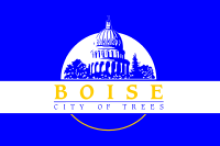Holly Springs, North Carolina, Looking to Save with Municipal Network
The Town Council of Holly Springs, North Carolina, just voted to pursue municipal network infrastructure. The Holly Spring Sun reports that the proposed network would include Town Hall, a local business park, the wastewater treatment plant, and school facilities. Wi-fi would be available in parks and public facilities. Holly Springs is about 25,000 people in the center of the state near Research Triangle Park.
The City is pursuing a plan focused on cost-savings for community anchor institutions - North Carolina law effectively prohibits local governments from connecting businesses or residents. However, local governments can still serve schools, libraries, public safety, and the like. We have previously released a fact sheet with some of the savings other communities have seen from these investments.
Council members expressed concern over the current cost of service from private providers and expected hikes in rates:
“It’s going to continue to be more expensive for us,” said Councilman Tim Sack said, for something “that’s going to be less than what we need and more than we can afford.”
The cost for the project could range from $1.3-$1.5 million for a connection to all town facilities, [IT Director Jeff]Wilson said.
WUNC reports that CTC Technology and Energy will design the network. Joanne Hovis, CTC President, noted that the town will not offer services but building the infrastructure will hopefully encourage competition.
Holly Springs mayor Dick Sears says the council believes the town can break even by shifting funds from its current Internet service.
"I think we all felt that, yes, this would be a pay-for-itself kind of an option to take, so we're in-the-works process. But at the same time, we heard enough good news during that presentation that we want to continue the process," Sears says.






